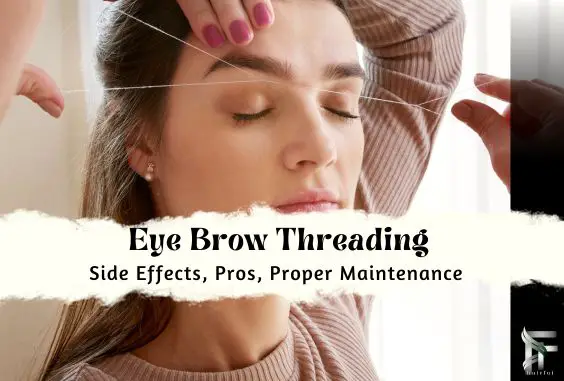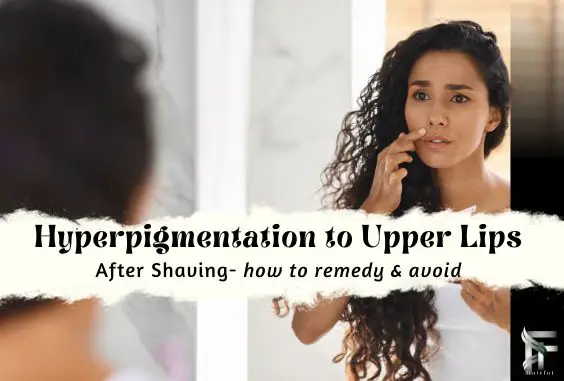Eyebrow Threading- Side Effects, Pros & How to Maintain

Eyebrow threading is a popular hair removal technique that traces its origins to ancient Eastern cultures. In recent years, it has gained widespread recognition and become a preferred hair removal method for shaping and grooming eyebrows.
So in this article, I will share with you firsthand experience and other important FAQs on threading your eyebrows.
What Is Eyebrow Threading
Eyebrow threading is a hair removal technique that involves using a thin cotton thread to remove unwanted eyebrow hairs. The process is where the will technician rolls and twists a length of thread over the hairs, catching and lifting them out from the follicles.
Threading is a precise technique that allows for targeted hair removal, creating a clean and well-defined eyebrow shape that enhances our facial features.
How Long Does It Last Compared To Other Methods
| Other Eyebrow Grooming Methods | Duration of Results compared to Threading – which last 4-5 weeks |
| Eyebrow Waxing | 4- 6 weeks |
| Eyebrows Tweezing | 4 – 6 weeks |
| Eyebrow Shaving/Thrimming | A few days – A week Time |
| Eyebrow Depilatory Creams | 1 – 2 weeks |
Related Articles
Threading Upper lip Hair- Cost, Pros & Cons, How to DIY
Disadvantages & Benefits Of Threading Hair
Does Eyebrow Threading Hurt- How To Prep & What To Expect
Pimples & Bumps After Threading- How to Treat & Prevent
Pros And Cons Of Eyebrow Threading
Threading your eyebrows is a great way of shaping and getting up unwanted around the brow area. Though this is one of the very effective methods which comes with great benefits, it also comes with a few risks and cons we need to look out for. Especially when ignoring the right procedure and certain precautions
Pros of Eyebrow Threading
- Threading allows for precise and controlled hair removal, resulting in well-defined and beautifully shaped eyebrows.
- It provides a more natural appearance as it does not involve the use of chemicals or leave behind visible regrowth.
- Threading is a gentle hair removal method that minimizes skin contact, making it suitable for eyebrow areas.
- Eyebrow threading removes hair from the root, leading to longer-lasting results compared to shaving or using depilatory creams.
- Threading does not use any harsh chemicals or heat, reducing the risk of skin irritation or burns.
- Threading is ideal for shaping and grooming delicate facial areas like the eyebrows.
- Unlike waxing, threading leaves no sticky residue on the skin, providing a clean and mess-free experience.
- Threading is generally a quick process, depending on your technician’s speed and skills.
- Threading can remove even shorter hairs, so there’s no need to wait for long hairs to grow back.
- After effects usually subsides quickly, after a few minutes with proper aftercare.
Related Articles
Threading Hair Aftercare- What to Do & Apply to Soothe Skin
Best Eyebrow Threading Machine- Pros, Cons & How to Use
Threading Vs Waxing Which Is Best For Face & Upper Lips
Cons of Eyebrow Threading
- We may experience mild discomfort or sensitivity during the threading process, especially if you have low pain tolerance.
- The effectiveness of eyebrow threading largely depends on the skill and experience of the technician. Inexperienced or untrained practitioners may not achieve the desired results.
- May experience temporary redness around your brow areas, no worries as it will subside after 1-2 hours.
- If you have certain skin conditions like eczema or psoriasis may find threading uncomfortable or irritating.
- Improper threading or poor aftercare can lead to ingrown hairs, though the risk is generally lower compared to some other hair removal methods.
- For threading to be effective, there needs to be some hair regrowth between sessions, which may be inconvenient for those who prefer a consistently groomed look.
- Threading your eyebrow is not recommended for a person with extra sensitive skin.
- Threading over acne is not advised, as the thread could damage the skin over the inflamed pores and spread around the inflammation.
- Lead to folliculitis if you thread over inflamed pores or acne.
- In unskilled hands, you may experience bruising of your skin.
- May lead to temporary hyperpigmentation, swelling, and other adverse reaction
- Using unclean thread can potentially cause bacteria to be transferred to your broken skin, leading to acne, folliculitis, skin infection, and so on.
Does Threading Increase Eyebrows Growth
Threading does not increase the thickness of our eyebrows, nor does it lead to a faster regrowth rate, however, it may cause your hair to become more sparse.
Will My Eyebrows Grow Back Normal After Threading
when unwanted hair is threaded they’re usually ripped out with their follicles. After constantly and regularly threading you may experience sparser hair regrowth after 4-6 weeks. This depends on how fast your follicles regenerate.
Does Eyebrow Threading Hurt The First Time
for someone who is not familiar with the threading experience you may find the process to be a bit painful and irritating due to the constant plucking of hair
How Often Should I Thread My Eyebrows
How Do You Maintain Eyebrows After Threading
- Avoid touching or rubbing your eyebrows after threading to prevent irritation and transferal of bacteria.
- Apply soothing gel to calm the skin and reduce redness and any posy hyperpigmentation.
- Refrain from using makeup on threaded areas immediately after the procedure.
- Avoid harsh skincare products and exfoliants around the eyebrows.
- Regularly moisturize the eyebrow area to prevent dryness.
- Avoid direct sun exposure on threaded eyebrows for 24-48 hours.
- Avoid hot baths, saunas, and steam rooms after threading.
- Trim longer hairs that may be out of place for a tidy look.
- Book regular touch-up sessions every 2 to 4 weeks to maintain the shape.
- Select experienced threading technicians who understand your eyebrow goals.
- Avoid over-plucking between threading sessions and let brows grow naturally.







